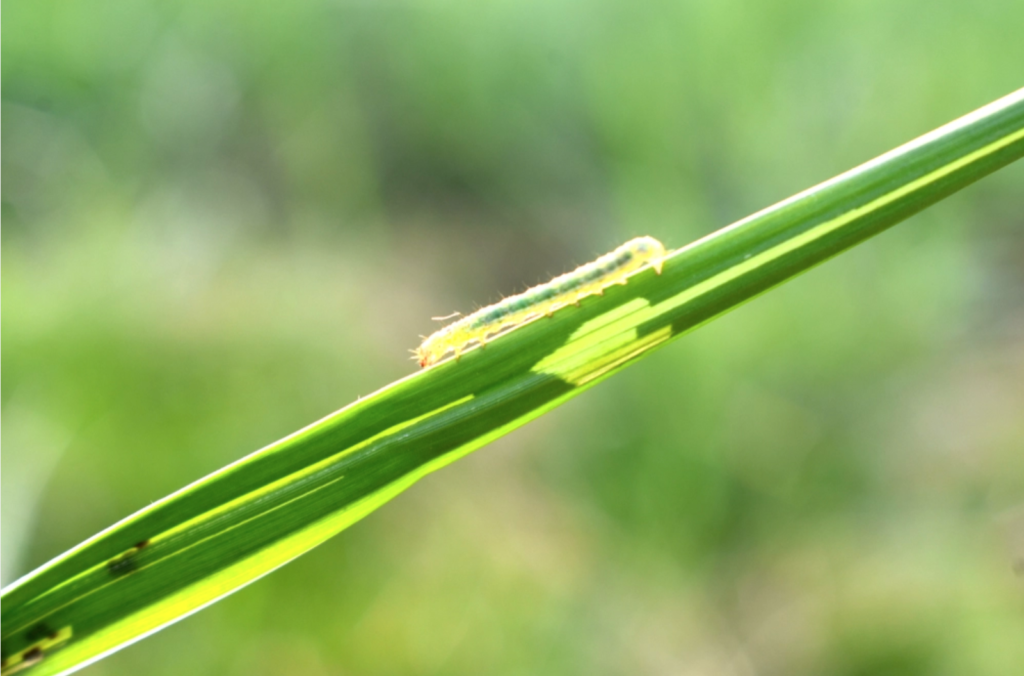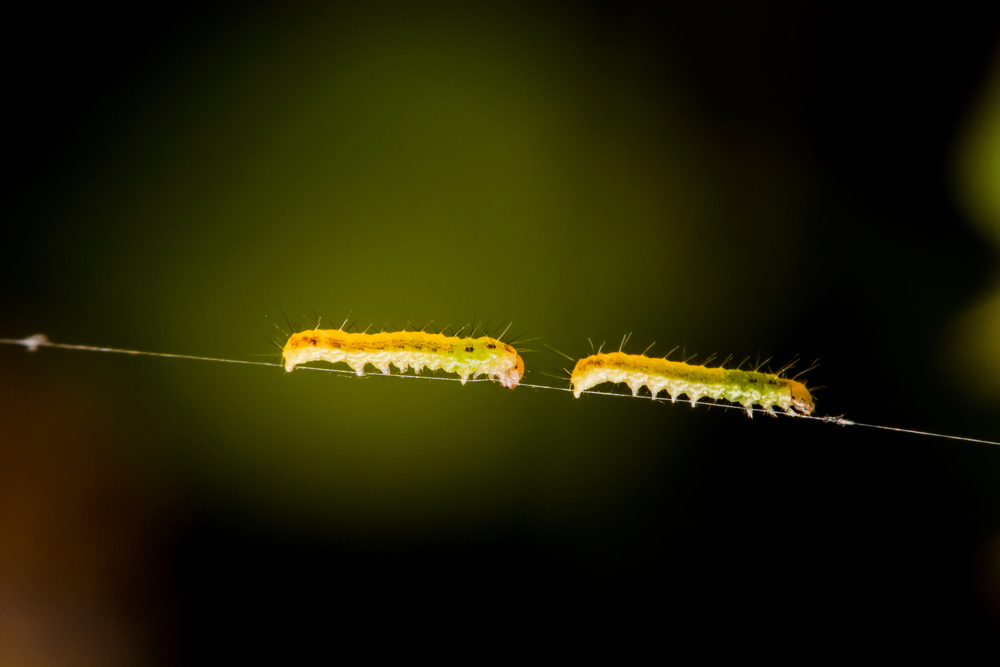
Have you ever noticed caterpillars crawling around in your lawn? Although some may eventually turn into pretty butterflies, certain caterpillars can be really damaging to your lawn. In fact, sod webworms are the most notorious for chewing through blades of turfgrass. Left unchecked, they can completely destroy entire lawns and landscapes.
Before tackling prevention or control strategies, it’s important to first understand what a sod webworm is, what it looks like and its various life stages. This ensures proper treatment.
Sod Webworm Life Cycle
The tropical sod webworm in particular is most common throughout the southeastern regions of the United States. This includes South Carolina, Georgia, Florida and Texas. Adult moths are typically observed in late May and early June while flying around during the end of the day as the sun goes down. This is when they begin to lay eggs.
Egg
Adult moths lay sod webworms eggs in late May and early June; however, this depends on where you’re located. In regions with warmer weather, adult moths may lay eggs even earlier. Each female moth is capable of laying 200 eggs per season. Eggs are cream-colored and located near the top of grass blades throughout the lawn. The eggs are laid in clusters of 1035 and typically hatch within 10–14 days.
Larva
Sod webworm larva is the most damaging to turfgrass. They’re usually found chewing through the blades of grass in the thatch layer of your lawn. Common symptoms of these pests are the appearance of small webs or frass. Symptoms of damage include patches of brown spots in the lawn where grass is absent—not just brown.
Caterpillars range from white to light green and yellow during this phase of the life cycle. They have brown heads and brown spots running down each side of their bodies.

Pupa
Once a sod webworm is fully grown in its larval stage, it’ll be about 3/4s to 1-inch in length. Depending on when the eggs are laid, most sod webworms reach full development and begin to pupate in mid-May or mid-June.
Adult
In the adult form, the webworm is a small beige moth, sometimes called a lawn moth or crambus, that has a 1-inch wingspan. It is the moth that begins the lawn damage process. The adult female moths fly at dusk, dropping eggs on the grass blade surfaces and thatch area of your lawn.
As adults, sod webworms turn into small cream-colored moths. Adult moths fly in a zig-zag fashion around dusk and drop eggs onto the lawn below. The sod webworm life cycle starts over from here.

Preventative Strategies
A common sign of a sod webworm infestation is the presence of small little webs in your turfgrass. Over-fertilizing your lawn with nitrogen creates a bunch of new growth and contributes to the thatch layer located within your lawns canopy. This is where sod webworms reside.
With that being said, it’s also helpful to reduce thatch build-up by regularly dethaching your lawn and using proper maintenance techniques.
A healthy lawn can withstand minor sod webworm infestations without the need to use curative treatments and chemicals. Check out our care guides for more information.
Curative Treatment
There are a couple of different treatments that treat sod webworm infestations. A very effective chemical is Bifenthrin, which is carried at our Carolina Fresh Farms outlets. At Carolina Fresh Farms we offer both a granular and a liquid option. Bifen I/T is a liquid formulation that is great at treating sod webworm infestations as well as other pests. Bifen L/P is the granular formulation that also treats sod webworms and other pests and requires you to water in the application.
If you suspect a sod webworm infestation, contact our Carolina Fresh Farms experts who will provide you with recommendations for both treatment and lawn recovery.
Related Products
Sorry, we couldn't find any posts. Please try a different search.
